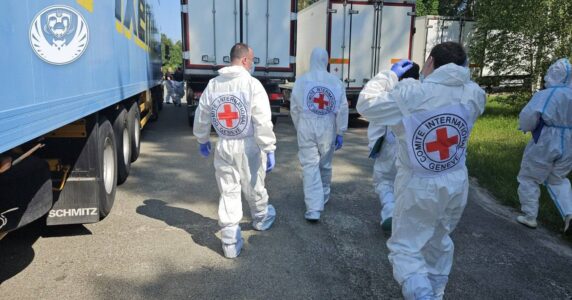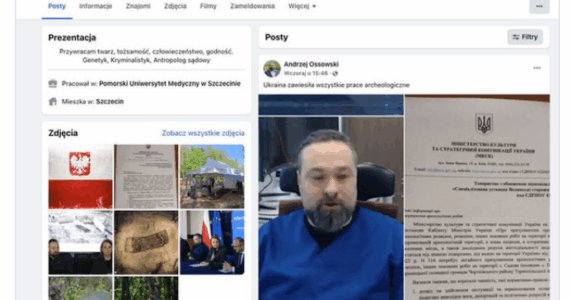Navigation and useful materials
How the small city Morshyn managed to vaccinate the majority of its adult population
Ukraine set a record for the number of COVID vaccinations in a day—on October 20, over 250,000 people were vaccinated. At the same time, the infection rates are soaring—six oblasts have already been assigned the “red zone” due to the situation with the epidemic.
Despite the fact that more and more people are contracting the coronavirus, 56% of Ukrainians do not intend to get vaccinated. This was found in a survey by the Democratic Initiatives foundation, conducted in September. The reasons include the fear of side effects, distrust in the safety of the vaccine, and lack of confidence in the government.
A striking example among these concerns is Morshyn’s experience, where they launched a project on mass vaccination of local residents back in April, which quickly proved effective: as of August, 66% of the adult population had already received both doses of the vaccine.
The key factors for the success of this campaign included transparent communication with the city’s residents, close cooperation with the medical community and the initiative of local authorities. Here, we are analysing Morshyn’s experience, which proves that active stance and interaction of all stakeholders helps to fight disinformation about vaccines and increase the level of vaccination.
A pilot project on mass vaccination was launched in Morshyn in mid-April, a new vaccination format for Ukraine at the time, as the country was in the second phase of vaccination, when the vaccine was generally only available to health workers, teachers and social workers. In Morshyn, however, anyone could get vaccinated.
The project was initiated by the city authorities of Morshyn and later supported by the Ministry of Health. The Center for Public Health calculated all the needs and capacity to reach 70% of vaccinations among the adult population within a month of the campaign. The Department of Health of the Lviv Oblast State Administration explains that it was decided to conduct this experiment to study and analyse how effective vaccination would be in a separate locality.
At the beginning of the project, there was a high level of distrust in vaccination on the ground—although the idea was to vaccinate 70% of the adult population in a month, it took two months to achieve this. Even so, the results proved successful.
Cooperation with the city administration
Trust in the city administration was one of the reasons why such a high level of vaccination was achieved in the city, says Oleh Kohut, coordinator for vaccination against COVID-19 in Lviv oblast.
“The city mayor was among the first people to get vaccinated. In my opinion, this was the first serious moment that led people to believe in the need for vaccination. The mayor’s example went public, he never hid it—this way, he showed that vaccination saved lives,” he commented for the Centre of Strategic Communication and Information Security.
Transparent communication and media involvement
In order to raise awareness about vaccination, they actively cooperated with all local media, from television to print media.
All work with the media had two components, awareness-raising and educational. First, it was necessary to show the need for vaccination as the only way not to get COVID-19 or at least to experience the disease in a milder form without serious consequences.
Secondly, they had to dispel the population’s fear of the vaccine due to rumours of complications and the incomplete stage of vaccine testing at the time (currently all vaccines in Ukraine are approved by the World Health Organization, they are also widely used worldwide). To combat fakes and fears about the vaccine, Morshyn used the groundwork of the Ministry of Health and the WHO, showed the experience of other countries to reassure the city population and debunk the myths about vaccination.
Printed materials with information on COVID-19 prevention were also used for communication: they were distributed to homes and at workplaces.
Family medicine doctors and word of mouth
During the experiment, a network of primary care physicians—family doctors who worked with their patients—was actively involved. The doctors called their patients and explained why they needed to get vaccinated and where it could be done. They particularly focused on the elderly to convince them to get vaccinated.
There were three vaccination points in the city – two of them based on the city hospital. A mobile team from the neighbouring town of Stryi was also used for reinforcements.
“This team went to Morshyn and worked with organized groups, such as corporate teams. The management of companies initiated vaccination and facilitated it for their employees, so the mobile team visited private companies, municipal enterprises, sanatoriums, educational establishments,” explains Oleh Kohut.
The result
As a result of mass vaccination, no new coronavirus cases were recorded in Morshyn for two months, from mid-June to mid-August. After that, the infection returned, but this was to be expected considering the general increase in the infection rates in Ukraine, explains the coordinator of COVID-19 vaccination in Lviv oblast. According to him, these are isolated cases, as it is mostly unvaccinated people who get sick.
However, this experience would be challenging to replicate in a bigger city—with a population of only 6,000, what worked for the city was word of mouth and confidence in the local authorities and management of local enterprises.
“The novelty in Morshyn was that we departed from the standard stages of vaccination. It was an experiment that was important at that time: there were not enough vaccines then, but there were plenty of them in Morshyn. Now, it is important to work with greater numbers of people, but this work is ongoing at all levels, from central to local,” says Oleh Kohut.
If you have found a spelling error, please, notify us by selecting that text and pressing Ctrl+Enter.


